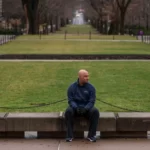As readers cope with new realities in response to COVID-19, providing them with clear and accurate information is more important than ever. AP Stylebook held a Twitter chat on March 23 to share style tips on writing about the pandemic, and other experts like Mignon Fogarty of Grammar Girl and Roy Peter Clark of Poynter have shared their own tips.
Savvy reporters use many of these strategies already, but it’s a worth a refresher, especially when they’re writing under tight deadlines or with little sleep. Here’s an overview of their advice with links to additional information.
Use punctuation
Many people feel overwhelmed right now, so the last thing they need is a series of long, complex sentences, especially when that information is crucial to public safety. “Think of the period as a stop sign,” writes Clark in his recent article for Poynter (worth a read in its entirety). “The more stop signs, the slower the pace, which is good if you are trying to make something clear.”
Clark also suggests keeping the subject and verb together near the beginning of the sentence, as overly complex sentences can confuse readers.
Avoid unfamiliar acronyms
Readers may not know that PPE stands for personal protective equipment or that WHO stands for the World Health Organization, so remember to write out the full name on first reference. The AP Stylebook says WHO or the WHO are both acceptable on second reference.
Choose correct terms
Coronavirus is technically a family of viruses, but in the current context, it clearly references a specific virus. Coronavirus and COVID-19 are both correct, according to Fogarty and other sources (never use geographic labels when referencing the name of the virus).
A pandemic is more serious than an epidemic, and the WHO has declared COVID-19 a pandemic, so pandemic is correct. No need to say “global pandemic” as pandemic means the outbreak has spread to several countries or continents.
Merriam-Webster defines some terms recently added to the dictionary such as socially distance.
Know when to hyphenate
When you’re using to-go as an adjective (as in “we placed a to-go-order”), it should be hyphenated, according to Fogarty. However, AP Stylebook says no hyphen in telecommute or videoconference. Ditto on N95 masks. Read AP Stylebook’s coronavirus topical guide for more guidance.
UPDATE: The Canadian Association of Journalists published a list of tips and best practices including safety precautions and tools for working remotely.










